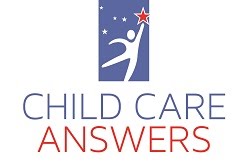 Take a Moment to Reflect on... Safety
Take a Moment to Reflect on... SafetyIn our last article we discussed the importance of intentionality. We said that the ultimate purpose for being a reflective practitioner is to become an intentional practitioner; in other words, teachers or caregivers who regularly think about what they do can be purposeful in the choices they make with children, families, coworkers and supervisors.
Safety
The Council is excited to announce that later this year we will release the newly-revised third edition of the landmark textbook Essentials for Child Development Associates Working with Young Children. The new Essentials will provide all of the most current research, information, ideas and strategies needed by entry-level early childhood professionals. The textbook will be organized around each of the thirteen Functional Areas, along with new information about reflection, intentionality, observation, documentation and other key topics of interest to contemporary teachers and caregivers.
Here is an advanced sneak peek of “Chapter 1: Safe” for you to reflect on…
Providing a safe environment for children is the starting point of every quality early childhood program. If children are not safe in your program, it makes no difference what kind of curriculum you offer. Children cannot learn if they are afraid, in danger or unable to trust that nothing bad will happen to them while in your care. Ask any parent with a child in preschool or child care what their most important concerns are and safety is almost always at the top of the list - right up there with accessibility and affordability. Children's safety is your first priority as a caregiver or teacher and a responsibility you cannot ignore
In order to keep young children safe you must:
Be sure that the physical environment is safe. This means checking both your indoor and outdoor play spaces every day to confirm that they are hazard-free and that they conform to recognized standards for safety.
Teach and prepare children to be safe in their everyday lives. This involves learning about safety rules and being introduced to specific safety measures.
Have well-thought-out emergency plans in place. This also involves preparing children to face unknown emergencies so that you can reduce danger and injury.
Model safe practices. This means demonstrating for children how to behave in ways that are safe and how to stay calm when emergencies arise.
Invite parents to be your partners in keeping their children safe. This is important because it shows children that safety is valued both by you and at home.
Safety
The Council is excited to announce that later this year we will release the newly-revised third edition of the landmark textbook Essentials for Child Development Associates Working with Young Children. The new Essentials will provide all of the most current research, information, ideas and strategies needed by entry-level early childhood professionals. The textbook will be organized around each of the thirteen Functional Areas, along with new information about reflection, intentionality, observation, documentation and other key topics of interest to contemporary teachers and caregivers.
Here is an advanced sneak peek of “Chapter 1: Safe” for you to reflect on…
Providing a safe environment for children is the starting point of every quality early childhood program. If children are not safe in your program, it makes no difference what kind of curriculum you offer. Children cannot learn if they are afraid, in danger or unable to trust that nothing bad will happen to them while in your care. Ask any parent with a child in preschool or child care what their most important concerns are and safety is almost always at the top of the list - right up there with accessibility and affordability. Children's safety is your first priority as a caregiver or teacher and a responsibility you cannot ignore
In order to keep young children safe you must:
Be sure that the physical environment is safe. This means checking both your indoor and outdoor play spaces every day to confirm that they are hazard-free and that they conform to recognized standards for safety.
Teach and prepare children to be safe in their everyday lives. This involves learning about safety rules and being introduced to specific safety measures.
Have well-thought-out emergency plans in place. This also involves preparing children to face unknown emergencies so that you can reduce danger and injury.
Model safe practices. This means demonstrating for children how to behave in ways that are safe and how to stay calm when emergencies arise.
Invite parents to be your partners in keeping their children safe. This is important because it shows children that safety is valued both by you and at home.
Please take a moment to reflect on your own teaching practices. What else might you add to the above list? How do you ensure children’s safety? What tips and strategies would you share with others for teaching safety practices, for keeping children safe, for modeling safe practices and for educating and involving families in their children’s safety?
Send your thoughts to reflect@cdacouncil.org
Send your thoughts to reflect@cdacouncil.org









No comments:
Post a Comment